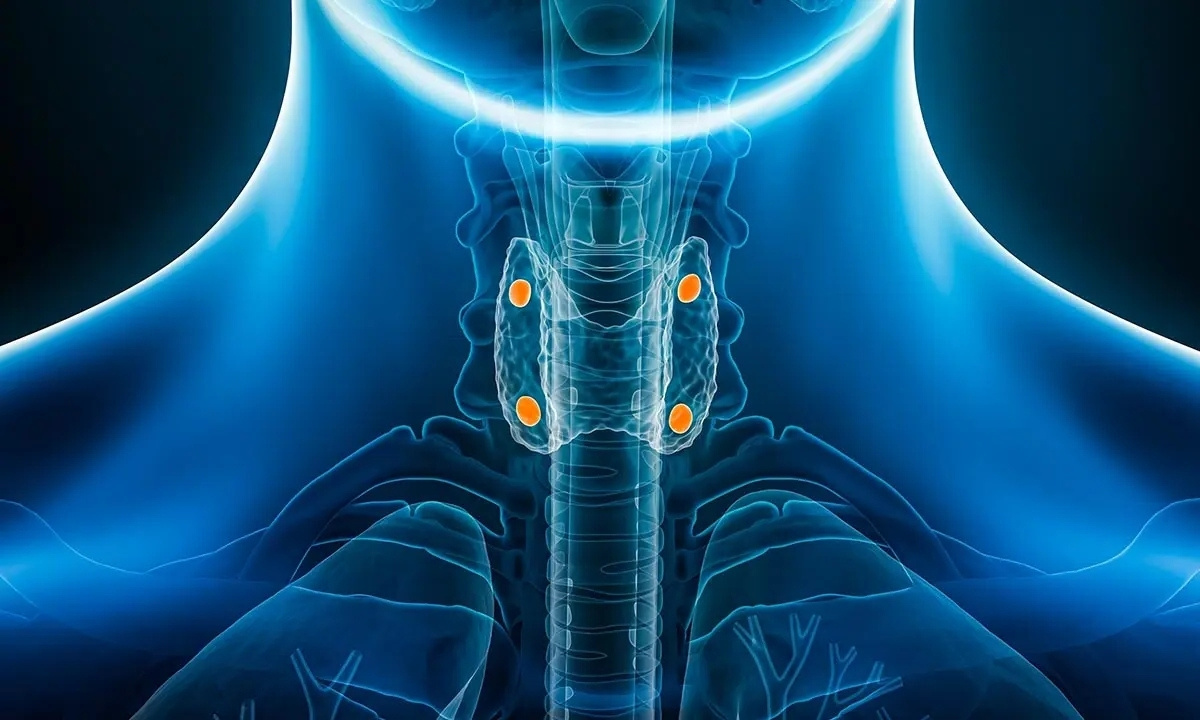
What is the parathyroid gland? The parathyroid gland is a small but mighty part of your body. Located behind the thyroid in your neck, these four tiny glands play a huge role in maintaining calcium levels in your blood. They produce parathyroid hormone (PTH), which helps regulate calcium, phosphorus, and vitamin D. Without these glands, your muscles, nerves, and bones wouldn't function properly. Despite their small size, they pack a punch in keeping your body balanced. Want to know more about these fascinating glands? Keep reading to uncover 25 intriguing facts about the parathyroid gland that will surprise you!
What is the Parathyroid Gland?
The parathyroid gland might be small, but it plays a big role in your body. These tiny glands are located in your neck, behind the thyroid. They help control the amount of calcium in your blood and bones.
- The parathyroid glands are usually four in number.
- Each gland is about the size of a grain of rice.
- They are located behind the thyroid gland in the neck.
- Despite their name, they have no function related to the thyroid.
Functions of the Parathyroid Gland
Understanding what these glands do can help you appreciate their importance. They produce parathyroid hormone (PTH), which regulates calcium levels in your body.
- PTH increases calcium levels in the blood by releasing calcium from bones.
- It helps the kidneys reabsorb calcium, preventing it from being lost in urine.
- PTH also activates vitamin D, which helps the intestines absorb calcium from food.
- Proper calcium levels are crucial for muscle contractions and nerve function.
Disorders Related to the Parathyroid Gland
When these glands don't work right, it can lead to health problems. Knowing about these disorders can help you recognize symptoms early.
- Hyperparathyroidism occurs when the glands produce too much PTH.
- Symptoms of hyperparathyroidism include fatigue, depression, and bone pain.
- Hypoparathyroidism happens when the glands produce too little PTH.
- Symptoms of hypoparathyroidism include muscle cramps, tingling, and seizures.
- Parathyroid cancer is extremely rare but can cause severe hyperparathyroidism.
Diagnosing Parathyroid Issues
Doctors use various tests to diagnose problems with these glands. Early diagnosis can lead to better treatment outcomes.
- Blood tests measure calcium and PTH levels.
- Imaging tests like ultrasounds and CT scans can locate abnormal glands.
- A Sestamibi scan is a special type of imaging test used to find overactive parathyroid glands.
Treatment Options for Parathyroid Disorders
Treatments vary depending on the type and severity of the disorder. Knowing your options can help you make informed decisions.
- Surgery is often the best treatment for hyperparathyroidism.
- Medications can help manage symptoms of hypoparathyroidism.
- Calcium and vitamin D supplements are commonly prescribed.
- In severe cases, hormone replacement therapy may be necessary.
Interesting Facts About the Parathyroid Gland
These glands have some surprising features and functions. Here are a few interesting tidbits you might not know.
- The parathyroid glands were first discovered in Indian rhinoceroses in 1852.
- They are one of the few glands that can be transplanted.
- Some people have more than four parathyroid glands, a condition known as supernumerary parathyroid glands.
- The glands can sometimes be found in unusual locations, like the chest.
- Despite their small size, they are essential for life; without them, calcium levels can become dangerously low.
Understanding the parathyroid gland can help you appreciate its role in maintaining your health. Whether it's regulating calcium or ensuring proper muscle function, these tiny glands are vital.
The Final Word on Parathyroid Glands
Parathyroid glands, though small, play a huge role in keeping our bodies balanced. These tiny glands manage calcium levels, which is crucial for bone health, muscle function, and nerve signaling. Without them, our bodies would struggle to maintain these essential processes.
Understanding these facts about parathyroid glands helps us appreciate their importance. From their discovery to their role in various health conditions, these glands are fascinating. Knowing how they work can also help in recognizing symptoms of disorders related to them, leading to timely medical intervention.
So, next time you think about your body's complex systems, remember the parathyroid glands. They might be small, but their impact is mighty. Keep these facts in mind, and you'll have a better grasp of how your body maintains its delicate balance.
Was this page helpful?
Our commitment to delivering trustworthy and engaging content is at the heart of what we do. Each fact on our site is contributed by real users like you, bringing a wealth of diverse insights and information. To ensure the highest standards of accuracy and reliability, our dedicated editors meticulously review each submission. This process guarantees that the facts we share are not only fascinating but also credible. Trust in our commitment to quality and authenticity as you explore and learn with us.
